Your grandmother knew something that budgeting apps don’t teach. Real savings come from simple habits, not complicated systems.
Americans throw away $3,000 worth of groceries every year. We spend up to 83% more when we swipe a card instead of paying cash. Despite all the modern money advice, most families still struggle to save.
The answer? Go back to what worked. These 26 old-fashioned methods are backed by 2025 research. They saved our grandparents during the Depression. They helped families survive on single incomes. And they’ll save you serious money today.
The best part? You don’t need any apps. No spreadsheets. No complicated tracking systems. Just simple choices that add up fast.
In the Kitchen
Food is expensive. But most of us waste huge amounts without realizing it. Walk to your trash can right now. What’s in there? Wilted vegetables. Moldy bread. Leftovers nobody ate. That’s money you threw away. These kitchen habits will cut your grocery bill fast.
1. Stop Throwing Food Away

Every week, you toss money in the trash. It happens when lettuce goes brown. When leftovers sit too long. When you forget about that chicken in the back of the fridge.
The numbers are shocking. A family of four wastes $3,000 worth of groceries every year. Across America, we throw out 35 million tons of food annually. That’s $261 billion down the drain. Per person, we’re wasting nearly $800 every single year.
Here’s the worst part. 43% of people always throw food out when it passes the “best by” date. But those dates aren’t about safety. They’re about quality. “Best by” means the food tastes best before that date. It doesn’t mean it’s dangerous after. “Use by” is for safety. Learn the difference.
80% of Americans don’t understand this. We’re throwing away perfectly good food because we’re confused.
Think about your fridge right now. What’s been sitting there too long? What did you buy with good intentions but never used?
What to do instead: Plan one leftover night each week. Clean out your fridge every Sunday. Eat everything in there before you shop again. Give your kids smaller portions if they never finish their plates. Use clear containers so you can see what needs eating. Store food properly so it lasts longer. Freeze things before they go bad.
Start a list on your fridge. Write down what needs to be eaten first. Make that your meal plan.
2. Drink Water, Coffee, or Tea

Soda costs a fortune. So does juice. And those fancy drinks at the store add up fast.
A 12-pack of soda costs $6-8. Most families buy several per month. That’s $50-100 spent on sugar water. Juice boxes for kids? Another $30-40 monthly. Sports drinks? Add another $20.
Your tap water is free. Coffee costs about $0.25 per cup when you make it at home. Tea is even cheaper. Yet most families spend hundreds every month on drinks they don’t need.
Coffee shops are even worse. That $6 latte every morning is $180 per month. Over $2,000 per year. For one person.
What to do instead: Keep a pitcher of cold water in your fridge. Add lemon slices if plain water bores you. Make iced tea in big batches during summer. Brew coffee at home instead of buying it. Get a good travel mug and take it with you.
Your kids will adjust. They might complain at first. But water with meals is normal. It’s what your grandparents drank. It’s free. And it’s healthier.
3. Bake Your Own Bread
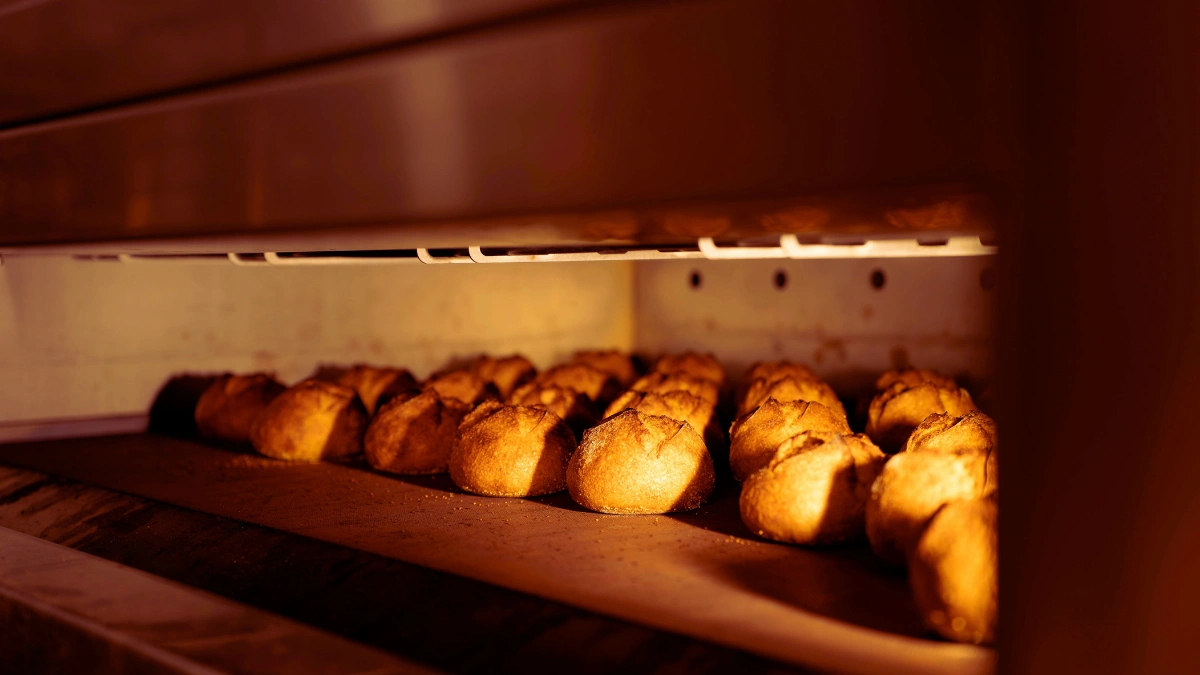
Store-bought bread costs $3-5 per loaf. Fancy bakery bread costs $6-8. Your family probably eats 2-3 loaves per week. That’s $15-20 weekly. Over $800 per year.
Homemade bread costs about $0.50 per loaf. The ingredients are cheap. Flour, water, yeast, salt. Maybe a little oil or honey.
You don’t need fancy equipment. A bowl and your hands work fine. No bread machine required. No mixer needed.
The process is simple. Mix ingredients. Let it rise while you do other things. Punch it down. Let it rise again. Bake it. The actual work time is about 15 minutes. The rest is just waiting.
What to do instead: Bake two loaves on Sunday. Eat one during the week. Freeze the other. Slice it before freezing so you can pull out pieces as needed. You’ll never buy bread again. And your house will smell amazing.
Start with a basic recipe. White bread is easiest. Once you’ve got that down, try wheat bread. Then get fancy with herbs or cheese if you want.
The first loaf might not be perfect. That’s okay. Even mediocre homemade bread tastes better than store plastic bread. Keep practicing. You’ll get good at it.
4. Stock Your Pantry Like Grandma Did
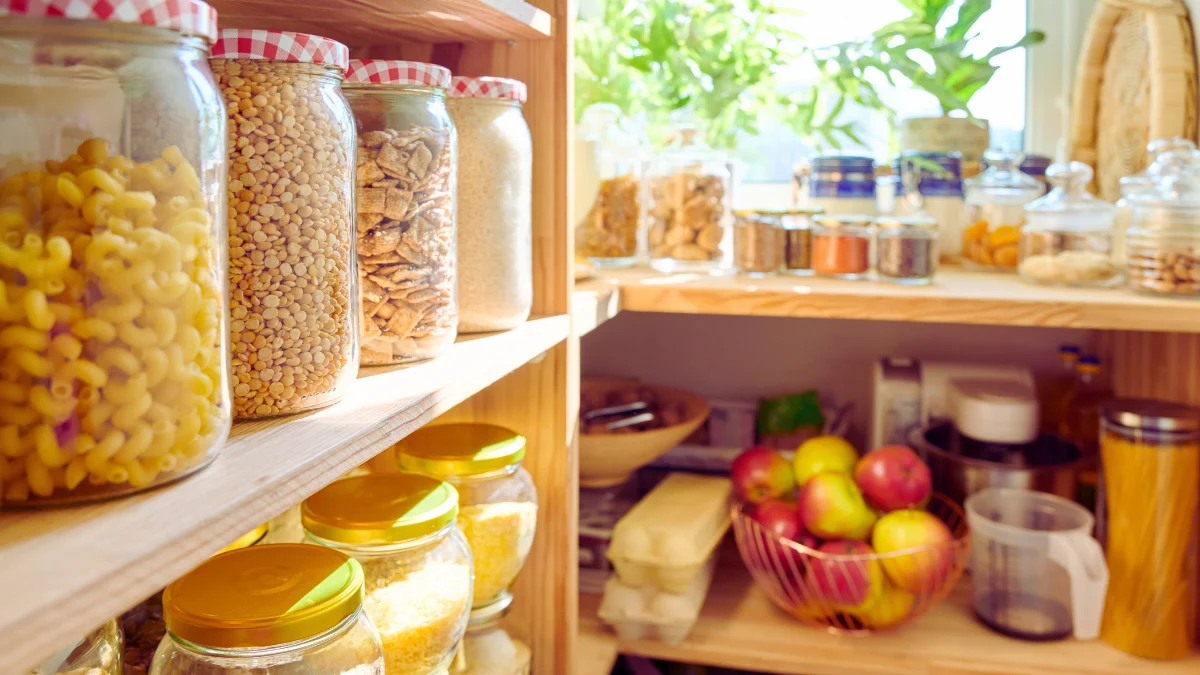
Nothing drains your budget faster than emergency grocery trips. You run out to grab “just a few things” for dinner. You come home with $75 worth of stuff. Half of it wasn’t on your mental list.
This happens because you don’t have the basics on hand. Your grandparents always had flour, sugar, rice, and beans. They could make a meal from what they had.
Keep shelf-stable foods stocked. Rice, beans, pasta, canned tomatoes, flour, oats. Things you can turn into a meal without planning. Having a stocked pantry means fewer trips to the store. Fewer trips mean less spending.
What to do instead: Build up your pantry slowly. Buy extra when things go on sale. This week, grab an extra bag of rice. Next week, stock up on beans. The week after, get extra pasta.
Aim to have ingredients for three complete meals ready to go. That way, if money is tight or you’re too tired to shop, you can still feed your family.
Write a list of your “pantry meals.” What can you make from shelf-stable ingredients? Spaghetti? Beans and rice? Soup? Know these recipes by heart.
5. Cook From Scratch More Often

Pre-made meals cost 3-5 times more than homemade. That bag of frozen chicken tenders? You’re paying for convenience. The pre-marinated meat? That marinade cost you an extra $4.
Restaurant meals cost even more. The average restaurant meal costs $15-25 per person. For a family of four, that’s $60-100. You could make the same meal at home for $15-20.
Yes, cooking takes time. But it doesn’t take as much as you think. Simple meals take 20-30 minutes. That’s less time than driving to a restaurant and waiting for food.
What to do instead: Learn five simple recipes you can make quickly. Stir fry. Tacos. Pasta with sauce. Chicken and rice. Soup. Keep ingredients for these on hand.
Cook double batches. Freeze half. Now you have homemade convenience food. On busy nights, pull it from the freezer. You’ve got a home-cooked meal in minutes.
Prep on weekends if weeknights are crazy. Chop vegetables. Brown meat. Make sauces. Store them in containers. During the week, just assemble and heat.
Your Money Habits
How you spend matters more than what you buy. You can have a great income and still be broke. You can earn less and build wealth. The difference is habits. These habits change your relationship with money.
6. Pay with Cash

This is the big one. If you do nothing else on this list, do this.
A study from MIT found that credit cards activate your brain’s reward center. The striatum lights up when you swipe a card. That’s the same part of your brain that responds to addictive drugs. Cards literally make spending feel good.
People spend more when they use cards instead of cash. The range depends on what you’re buying. For big purchases, the difference is huge. People bid 83% more on sports tickets when told they’d pay with a card versus cash.
Think about it. The average cash transaction is $22. The average credit card purchase is $57 to $112. Same person, same store, different payment method. The card makes you spend more.
Why? Because credit cards decouple payment from purchase. You buy now, pay later. Your brain doesn’t register the loss. There’s no pain. With cash, you physically hand over money. You see your wallet get lighter. You feel it.
Credit card companies know this. That’s why they push cards so hard. The more you use them, the more you spend. The more you spend, the more they make.
What to do instead: Try cash for one month. Just one. Take out your grocery budget in bills at the start of the week. Put it in an envelope. When it’s gone, you’re done shopping.
Do the same for gas, eating out, and entertainment. Each category gets its own envelope. This is called cash stuffing. It sounds old-fashioned. It works.
You’ll be amazed at how much you save. Most people cut spending by 20-30% just by switching to cash. That’s hundreds of dollars per month.
Yes, it’s less convenient. Yes, you have to plan. But convenience is expensive. That’s the whole point.
7. Buy Things That Last
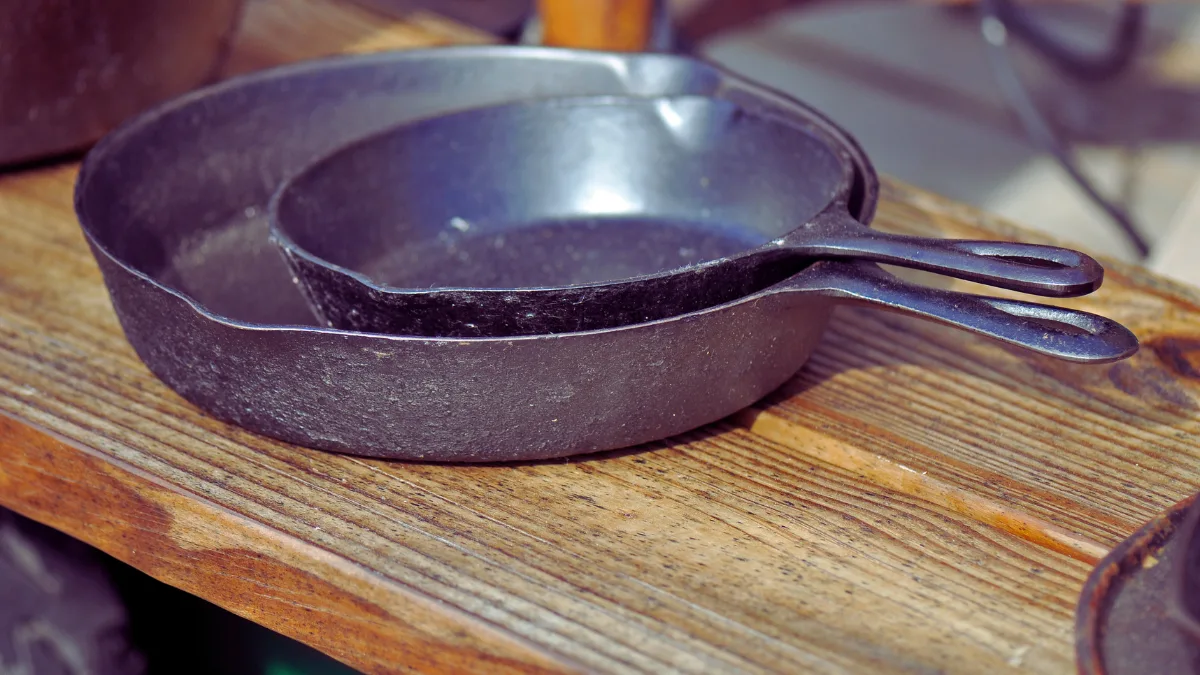
Cheap stuff breaks. Then you buy it again. And again. You end up spending more.
Your grandmother bought a good cast-iron pan. She used it for 50 years. Then she passed it to your mom. It’s still working today. That’s one purchase for multiple lifetimes.
Compare that to cheap pans. You buy one for $20. It warps in a year. You buy another. Over 10 years, you’ve spent $200 on pans that keep breaking. You could have bought $100 pan that lasts forever.
This applies to everything. Furniture, tools, clothes, appliances. Think about how something will look in ten years. Can you repaint it? Will it fade and crack? Will you throw it out because it’s cheap plastic?
What to do instead: Spend more on things you’ll use daily. Your bed, your shoes, your cooking pots. These items matter. Use them every day. Buy quality.
Spend less on things you’ll use rarely. That special occasion dress? That tool you need once? Go cheap on these.
Choose wood over plastic. Metal over particle board. Natural materials over synthetic. They last longer. They look better as they age.
Buy used quality instead of new junk. A 50-year-old solid wood dresser beats a new particle board one. The old one costs less and will outlast you.
8. Take Care of What You Have

You spent good money on your stuff. Make it last.
Clean your tools after using them. Wipe them down. Store them properly. Oil your cast-iron pan after every use. Polish your good shoes. Condition your leather. Wash your car. These small actions add years to everything you own.
Your grandparents did this automatically. They grew up when things were expensive and money was tight. They couldn’t just replace broken stuff. So they took care of it.
What to do instead: Spend 10 minutes after each use maintaining your things. Clean your lawnmower. Sharpen your knives. Vacuum your furniture. Fix small problems before they become big ones.
A loose button is easy to fix. A torn seam is easy to sew. Do these repairs immediately. Don’t wait until the whole garment falls apart.
Learn basic maintenance for your appliances. Clean your dryer vent. Change your furnace filter. These simple tasks prevent expensive repairs.
It beats spending $200 to replace something you could have maintained for free.
9. Borrow Before You Buy

Your neighbor has a ladder. Your friend has a carpet cleaner. Your cousin has a pressure washer. Your brother has a truck.
Do you really need to own these things? Most tools sit unused 360 days a year. That ladder in your garage? You use it twice annually. Yet you spent $150 on it.
Americans have garages full of stuff we barely use. We spent thousands buying it. Now it just takes up space.
What to do instead: Ask to borrow items you’ll use once or twice. Most people are happy to lend things. They’re just sitting around anyway.
Return borrowed items cleaner than you got them. Fill up the gas tank. Include a thank-you note. Be the kind of borrower people want to help.
Offer your stuff in return. Maybe you have a drill. Maybe you have a good cooler. Share what you have. Build a borrowing network with people nearby.
Some neighborhoods have tool libraries now. Members share equipment. Everyone has access. Nobody has to buy everything. Look for one near you.
10. Trade Services Instead of Cash
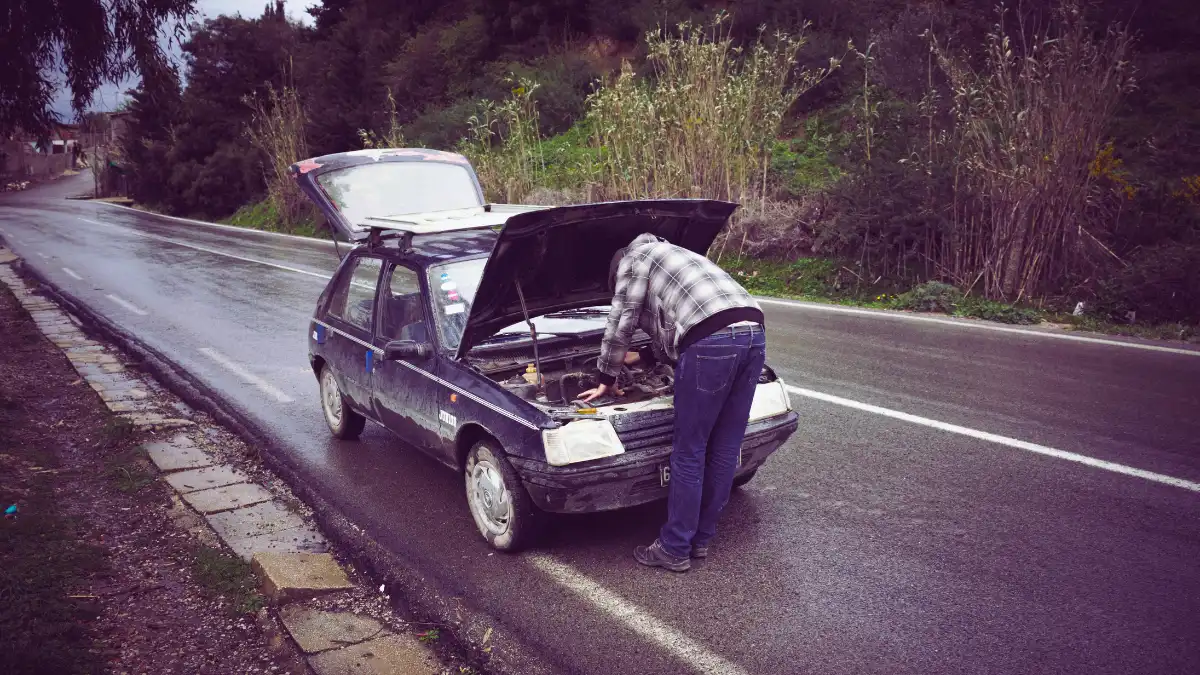
Bartering is better than selling. You don’t pay taxes on traded services. The government doesn’t track it. It’s legal. It’s just two people helping each other.
Maybe you’re good at fixing computers. Your friend can fix cars. Maybe you bake amazing bread. Your neighbor grows vegetables. Trade your skills.
This used to be normal. Communities helped each other. Now we pay strangers for everything. We’ve lost something valuable.
What to do instead: Start by giving things away. Excess eggs from your chickens. Tomatoes from your garden. Homemade soap. Don’t ask for anything back. Just give.
People remember. They’ll return the favor. They’ll offer help when you need it. That’s how community works.
Maybe you can watch someone’s kids. They can help you move furniture. Maybe you can teach someone to cook. They can help you with your taxes. Get creative.
Start local. Talk to your neighbors. Find out what they’re good at. Tell them what you can do. Opportunities will appear.
Home and Energy
Your biggest bills come from keeping your house comfortable. Heating, cooling, electricity. These costs add up to thousands yearly. But you can cut them without suffering. These old tricks work.
11. Hang Your Clothes to Dry

Your dryer is expensive. Really expensive. And you probably don’t realize how much it costs.
A 2025 study from the University of Michigan found that line drying saves households $2,100 over a dryer’s lifetime. That’s not a typo. Two thousand, one hundred dollars. Just from hanging clothes instead of machine drying them.
Each dryer load costs $0.20 to $1.10 to dry. The range depends on your electricity rates and dryer efficiency. If you do 6 loads per week, that’s $1.20 to $6.60 weekly. Over a year, that’s $62 to $343. Over the dryer’s 16-year lifespan, it costs $992 to $5,488.
Dryers use 6 times more energy than washing machines. They account for 3% of your entire electric bill. Across America, we spend over $7 billion annually just to power our dryers. That’s billion with a B.
Yes, line-dried clothes feel stiff. Here’s the fix: when they’re almost dry, toss them in the dryer for 10 minutes on air fluff. You get soft clothes and still save 90% of the energy. Or just hang them and get used to it. They soften up once you wear them.
What to do instead: Start with one load per week. Hang it outside on a clothesline. Or use a drying rack indoors. You don’t need a big yard. An apartment balcony works. Even an indoor rack works fine.
You’ll get used to it. The clothes smell fresher. They last longer because dryer heat damages fabric. And you’ll love watching your electric bill drop.
Work up slowly. Maybe hang one load the first week. Two loads next week. Eventually, you might line-dry everything in summer and use the dryer only in winter.
12. Turn Off the Water

Dad was right about this. Running water while brushing your teeth wastes gallons. So does leaving the faucet on while washing dishes.
An open faucet uses 2-3 gallons per minute. Brush your teeth for two minutes with the water running? That’s 4-6 gallons down the drain. Do that twice daily, and you’ve wasted over 3,000 gallons per year. Just from tooth brushing.
Washing dishes with running water? You could use 20 gallons in 10 minutes. Your grandma filled the sink with soapy water. She used maybe 5 gallons total.
What to do instead: Fill a bowl with soapy water for washing dishes. Fill another bowl with clean water for rinsing. Use these instead of running water. Time your showers and try to cut one minute. Install a low-flow showerhead. Fix leaky faucets immediately.
Every drop you don’t use is money you keep. Water bills are rising. In some cities, they’ve doubled in the past decade. This matters more now than ever.
Plus, you’re paying to heat that water. Less water used means less gas or electricity for heating. You save twice.
13. Repair Instead of Replace

Your washing machine makes a weird noise. Your phone runs slowly. Your car has a small problem. The new models look so nice. They have all the latest features. But wait. Can the old one be fixed?
Repairs almost always cost less than replacements. Always. A washing machine repair might run $100-250. A new machine costs $600-1,200. That repair could give you five more years.
Phone running slow? A new battery costs $50. A new phone costs $800. Reset it, clear the cache, and delete old apps. Often, it runs fine again.
Your grandparents repaired everything. They had to. New stuff was expensive. Throwing things away wasn’t an option. They squeezed every year of life from their possessions.
What to do instead: Call a repair person first. Get a quote. Compare it to buying new. If the repair costs less than half the replacement price, fix it.
Learn basic repairs yourself. YouTube teaches everything. Replacing a dryer belt? Easy. Fixing a leaky faucet? Simple. Changing a phone screen? Doable.
You’ll save thousands over your lifetime. And you’ll learn valuable skills.
14. Watch Your Electricity

Little things add up. Lights left on in empty rooms. Devices are plugged in all night. The fridge is set too cold. Cable boxes that never turn off.
Every wasted watt costs money. Your electric company charges by the kilowatt-hour. Currently, Americans pay an average of $0.16 per kWh. Some areas pay twice that.
A light bulb uses 60 watts. Leave it on for 10 hours, that’s 0.6 kWh. That costs about $0.10. Do that with 5 lights for a month, and you’ve wasted $15. Over a year, $180. Just from the lights nobody was using.
What to do instead: Turn off lights when you leave a room. Unplug chargers you’re not using. They draw power even when nothing’s charging. Use power strips so you can turn off multiple devices at once.
Open curtains when you want the sun to warm your house in winter. Close them when you want to keep the heat out in summer. Use the sun strategically.
Check your fridge temperature. It should be 37-40°F. The freezer should be 0°F. Colder than that wastes energy. Adjust the settings.
Walk through your house tonight. Unplug things you don’t need. Turn off what you’re not using. Check your electric bill next month. You’ll see the difference.
15. Be Smart About Heating and Cooling

Air conditioning and heating are your biggest energy costs. Together, they account for about 50% of your energy bill.
Your grandparents didn’t have central air. Many didn’t have AC at all. They survived. They used fans. They opened windows at night. They closed the curtains during hot days.
I’m not saying suffer through summer heat. But treating AC like it’s free is expensive. Same with cranking the heat in winter.
What to do instead: Set your thermostat 2 degrees warmer in summer, 2 degrees cooler in winter. You’ll barely notice. You’ll save 10-15% on heating and cooling costs. That’s $200-300 yearly for most families.
Wear a sweater inside during winter. Use blankets. Your grandparents did this automatically. Set the heat at 68°F instead of 72°F. Layer up.
In summer, use fans. They cost pennies to run compared to AC. Close blinds during the hottest part of the day. Open windows at night to let cool air in.
Change your furnace filter every 1-3 months. A clogged filter makes your system work harder. That costs more money and wears out your equipment faster.
Cleaning and Household
Cleaning supplies are expensive. Most of them are unnecessary. Your grandmother cleaned her whole house with a few simple products. Her house was spotless. You can do the same.
16. Cut Up Old Clothes for Rags

Paper towels cost $2-3 per roll. The average family uses 2 rolls per week. That’s $4-6 weekly. Over a year, that’s $208-312. Just for paper towels.
Old t-shirts work better. They’re more absorbent. They don’t fall apart when wet. You can wash them and use them hundreds of times.
Cut them into 12-inch squares. Keep a stack under the sink. Use them for everything. Spills, cleaning counters, washing mirrors, dusting furniture.
What to do instead: Save worn-out clothes in a rag bag. When you get a stain that won’t come out, that shirt becomes a rag. When socks get holes, cut them up. Old towels make great cleaning rags.
Keep some under every sink. Keep some in the garage for messy jobs. Keep some in the bathroom.
Stop buying paper towels completely. You’ll save over $200 per year. You’ll create less waste. You’ll have better cleaning tools.
Throw the used rags in the wash with your towels. They’ll be clean and ready again. One set of rags lasts for years.
17. Make Your Own Cleaners

Store-bought cleaners cost $3-8 per bottle. You need different ones for different jobs. Glass cleaner, counter spray, bathroom cleaner, floor cleaner. That adds up to $50-100 every few months.
Most cleaning jobs need only a few basic ingredients. Vinegar, baking soda, plain soap, water. These cost almost nothing.
Vinegar and water clean glass perfectly. No streaks. Baking soda scrubs sinks and tubs. Plain soap and water handle most jobs. For tough stuff, try Bar Keepers Friend. It costs $2 and lasts forever.
What to do instead: Mix equal parts vinegar and water in a spray bottle. Use it on counters, windows, and floors. It’s safe, cheap, and works great.
For scrubbing, sprinkle baking soda on the surface. Add a little water to make a paste. Scrub with a cloth. Rinse.
Add a drop of dish soap to your vinegar spray for greasy messes. That’s all you need.
Buy one good spray bottle. Fill it yourself. One gallon of vinegar costs $3 and makes 32 bottles of cleaner. Compare that to buying 32 bottles of Windex at $4 each. That’s $128 versus $3.
18. Do Simple Jobs Yourself

Painting isn’t hard. Neither is mowing grass, washing your car, or cleaning your gutters. But hiring someone costs $50-200 for jobs you could do yourself.
Your grandparents did their own home maintenance. They had to. Professional services were expensive. So they learned.
Some things need professionals. Electrical work, plumbing that requires permits, and anything structural. Don’t mess with those. But most jobs are simpler than you think.
What to do instead: Try it yourself first. Watch a YouTube video if you need help. Most home tasks are straightforward.
Painting a room? It takes an afternoon and costs $30 in paint. Hiring someone costs $200-400. Mowing your lawn? Thirty minutes of work versus $40-60 to hire it out.
You’ll learn new skills. You’ll save hundreds every year. You’ll feel capable and independent.
Start with small jobs. Paint one room. Fix one leaky faucet. Change one light fixture. Build confidence. Move to bigger projects.
19. Fix Up Old Furniture
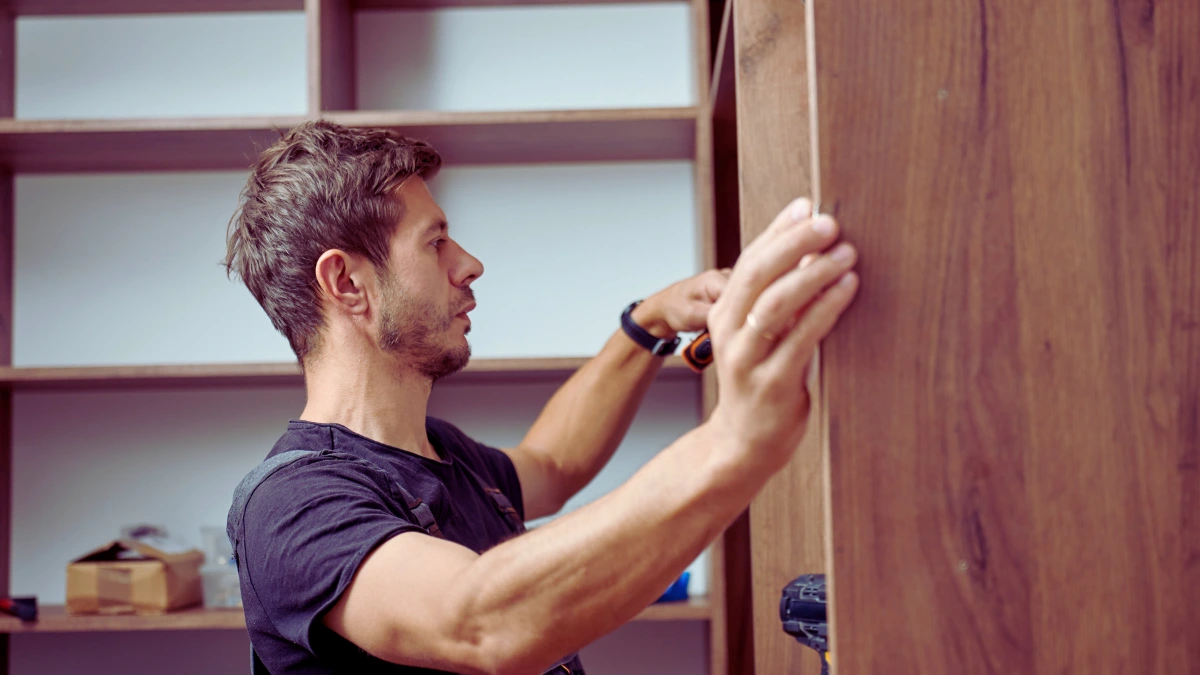
New furniture is overpriced. A decent couch costs $1,000-2,000. A dining table runs $500-1,000. And most new furniture is junk. It’s particle board covered in vinyl. It falls apart in 5 years.
Yard sales are full of solid wood pieces. They look ugly. The finish is scratched. The fabric is dated. But the structure is sound. Real wood. Real craftsmanship. Built to last.
Paint fixes ugly wood. New fabric fixes dated upholstery. A little work transforms trash into treasure.
What to do instead: Buy a $20 table at a yard sale. Sand it smooth. Paint it white, black, or any color you want. You’ve got a custom piece for $30 total that would cost $300 new.
Reupholster that dated chair. Fabric costs $20 per yard. You need 2-3 yards. Watch a tutorial. It’s easier than you think. You’ve got a beautiful chair for $60 that would cost $400 new.
Look for quality bones. Solid wood, not particle board. Good joinery, not staples. These pieces last forever with a little care.
Your grandparents kept furniture for decades. You can too. Stop buying disposable junk.
For Parents
Kids are expensive. Diapers, clothes, toys, activities. The costs never stop. But you can cut baby expenses dramatically without your children feeling deprived. These tips save thousands.
20. Use Cloth Diapers
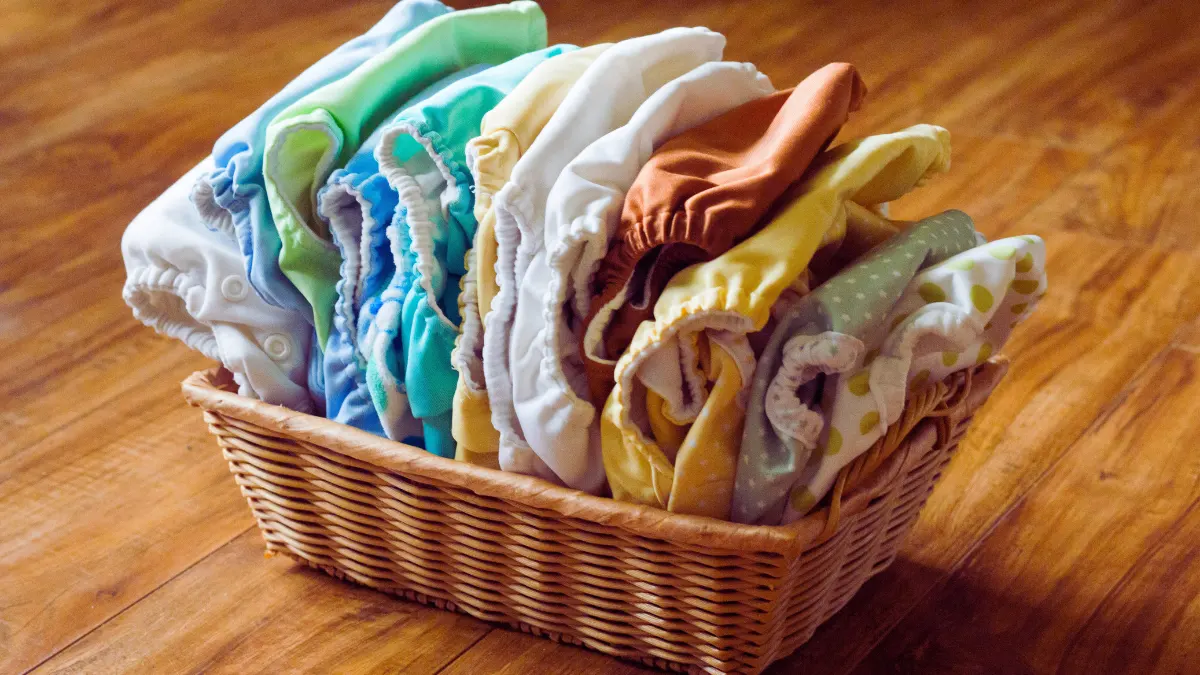
This is huge. This one tip alone saves more than most others combined.
Disposable diapers cost $2,500-$3,500 from birth to potty training. That’s for one child. The cost depends on when your baby potty trains. Most kids are in diapers until age 3.
Each disposable diaper costs $0.20-$0.40. Babies use 8-12 diapers daily. That’s $1.60-$4.80 per day. Over 3 years, the costs add up fast.
Cloth diapers cost $400-$800 upfront. That’s it. That’s the total cost. Buy once, use for years. Use them for multiple kids, and you save even more.
Yes, they’re more work. You have to wash them. But modern cloth diapers are easy. They have velcro and snaps like disposables. They fit well. They don’t leak.
Plus, babies in cloth diapers often potty train 6-12 months earlier. They feel wet, so they’re motivated to use the toilet sooner. That’s even more savings.
What to do instead: Start with one pack of cloth diapers. Try them on weekends when you’re home. If you like them, buy more. If you hate them, you’re only out $100-150.
Most parents who try cloth end up liking it. It becomes routine. Like doing any other laundry.
Wash every 2-3 days. Use hot water and a good detergent. Hang them to dry for extra savings. You’re done.
Even if you just use cloth at home and disposables when out, you’ll save money. Any reduction helps.
21. Get Rid of Most Toys

Your kids don’t play with 90% of their toys. You know this is true. Walk into their room right now. How many toys are they actually using? How many just create clutter?
The toy industry has convinced us that kids need constant new stuff. They don’t. Children play more creatively with fewer toys. They focus better. They imagine more.
Plus, fewer toys mean less clutter. Less to clean up. Less to organize. Less money spent on storage.
What to do instead: Box up half the toys. Put them in the garage or basement for a month. See if your kids ask for them. They won’t.
After a month, donate them. Your kids never missed them. Now their room is cleaner. You have less stress.
Resist buying new toys constantly. Birthdays and Christmas are enough. The rest of the year, kids can play with what they have.
Choose quality over quantity. One amazing art set beats 20 cheap plastic toys. One good bike beats a dozen action figures.
Your grandparents had a few toys. They played outside. They used their imagination. They turned boxes into castles and sticks into swords. Your kids can do this too.
22. Buy Secondhand Kids’ Clothes
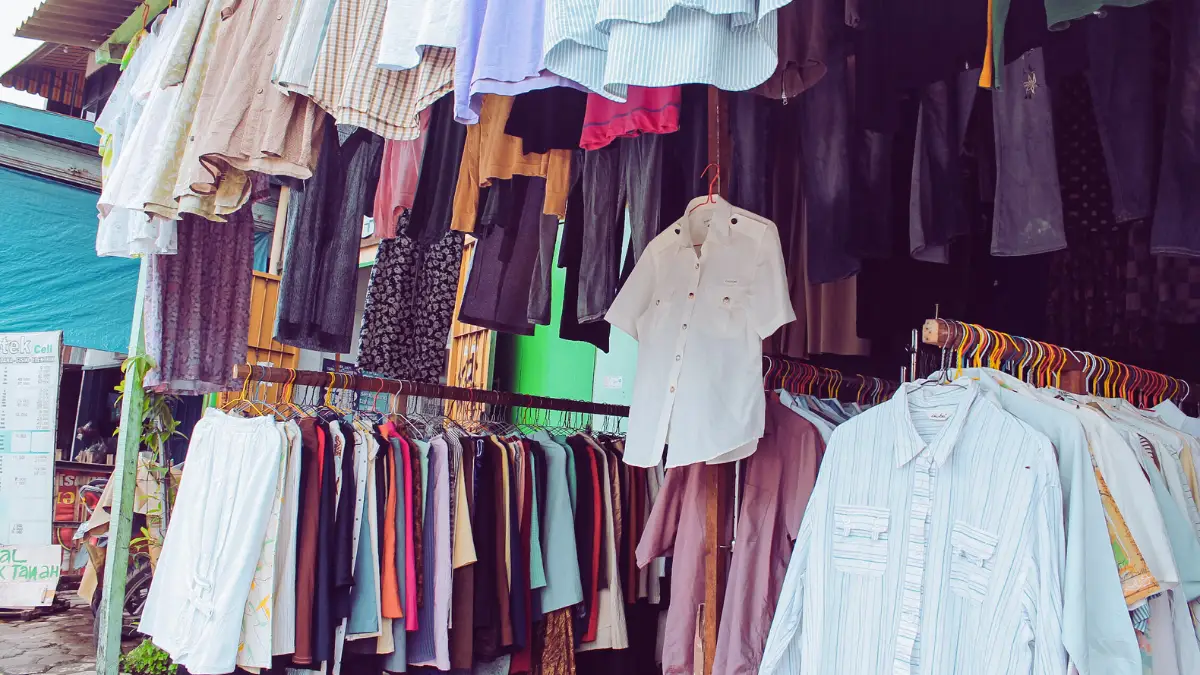
Children outgrow clothes in months. Sometimes weeks. Why buy new?
A new kids’ outfit costs $20-40. They wear it for 2-3 months. Then it doesn’t fit. You need to buy more.
Secondhand stores have nearly-new kids’ clothes for $2-5 per item. Consignment sales are even better. You can outfit your child for a season for $50. The same clothes would cost $300 new.
Kids don’t care if clothes are new. They don’t know the difference. They care if the shirt has their favorite character or if the pants are comfortable.
What to do instead: Find local kids’ consignment sales. They happen twice yearly in most cities. Shop there first. Buy only what you need.
Join local buy-sell-trade groups online. Parents sell outgrown clothes cheaply. Buy from them. Sell your outgrown stuff to others. The cycle continues.
Save really nice pieces for younger siblings or resell them. But everyday clothes? Buy used. Save hundreds.
Your child won’t know the difference. Your wallet will.
Entertainment and Free Fun
You don’t need to spend money to have a good time. Entertainment is one of the easiest places to cut expenses. Our grandparents proved this. They had full, happy lives without constantly spending.
23. Use the Library

Libraries are free. Completely free. They have books, movies, and audiobooks. Most have video games now, too. Many have tools and equipment you can borrow.
You can request specific books through interlibrary loan. They’ll get books from other libraries for you. Download e-books to your phone or tablet. Borrow DVDs for family movie night. All free.
Many libraries offer free classes. Cooking, computers, crafts, languages. Free programs for kids. Story times, summer reading clubs, activities.
Americans spend $3,000+ per year eating out for entertainment. They spend hundreds on books and movies they’ll use once. The library costs nothing and offers all of this.
What to do instead: Go this weekend. Get a library card if you don’t have one. It takes 5 minutes. Check out something fun. A book, a movie, an audiobook for your commute.
Make it a weekly habit. Many families make library trips their weekend routine. It’s free, educational, and fun.
If you buy 2 books per month at $15 each, that’s $360 yearly. If you see 2 movies at $12 each, that’s $288 yearly. The library provides both free. That’s $648 saved.
24. Visit Friends at Home

Coffee shops charge $6 per drink. Restaurants charge $15-25 per meal. Meet a friend for lunch out? That’s $40-50 total. Do this weekly, and you’ve spent $2,000 yearly.
Invite friends over instead. Make coffee at home. It costs $0.25 per cup. Talk on your porch. Take a walk together. Play board games. Actually talk without restaurant noise.
The time is better too. Restaurants rush you. At home, you can talk for hours. Really catch up. Connect deeply.
What to do instead: Text a friend right now. Invite them over for coffee this week. Make it casual. No fancy food needed. Just time together.
Take turns hosting. This week at your house, next week at theirs. Share the responsibility.
Do potlucks instead of restaurants. Everyone brings one dish. You get variety without the cost. A home-cooked meal together beats restaurant food anyway.
Your grandparents did this constantly. Neighbors visited neighbors. Friends gathered at homes. It built a community. It costs nothing. It created deep relationships.
25. Walk Instead of Driving

Gas is expensive. The IRS values driving at $0.67 per mile for 2025. That includes gas, maintenance, depreciation, and insurance. Every mile you drive costs real money.
Car maintenance is expensive. Oil changes, tires, brakes. The more you drive, the faster things wear out.
If you’re going less than a mile, walk. You’ll save money. You’ll get exercise. You’ll notice things you miss when driving.
What to do instead: Map out places within walking distance. The library, a friend’s house, the corner store, the park. Choose one errand per week to do on foot. Build up from there.
Get a good backpack or basket. You can carry groceries, library books, whatever you need. Walking with purpose works fine.
You’re also less likely to buy random stuff when you have to carry it home. That alone saves money.
In nice weather, walk more. In bad weather, combine errands. Plan one car trip instead of three. Your car will last longer. Your wallet will get fatter.
26. Grow Some Food

You don’t need a big garden. Even a few plants save money. A tomato plant produces 10-15 pounds of tomatoes. At $3 per pound at the store, that’s $30-45 per plant. The plant costs $3.
Plant things that are expensive at the store. Herbs, tomatoes, peppers, lettuce, berries. Skip cheap things, like potatoes.
Even small spaces work. Pots on a balcony. Herbs in a window box. A few raised beds in your yard. Start small. Learn. Expand.
Your grandparents grew food. Not for fun. For survival. A backyard garden fed the family. They canned extras for winter. It was normal.
What to do instead: Start with three plants this spring. Cherry tomatoes, basil, and peppers. Put them in pots if you don’t have yard space. Water them every few days. Eat what grows.
Next year, add more. Try lettuce. Try green beans. Learn what grows well in your area.
A bigger garden saves more. Some families cut grocery bills by $500-1,000 yearly from gardening. But even $50 saved is worth the effort.
Plus, homegrown food tastes better. Store tomatoes are picked green and shipped thousands of miles. Your tomatoes ripen on the vine. The difference is amazing.
Kids benefit too. They’ll eat vegetables they grew themselves. They’ll learn where food comes from. They’ll spend time outside instead of on screens.
Start small. Don’t overwhelm yourself. Three plants this year. Six next year. Build slowly.

